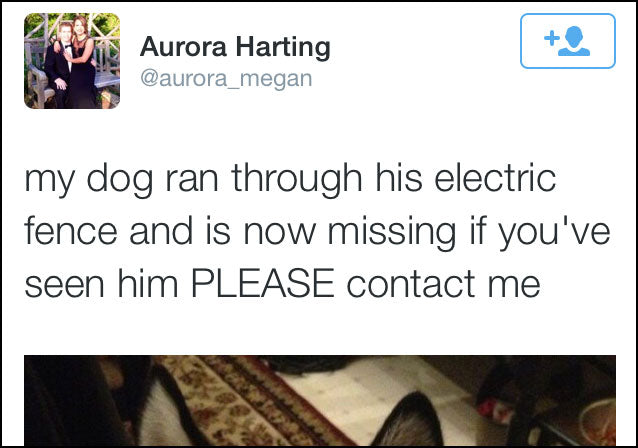Explore safe and effective alternatives to invisible dog fence, from physical fences to training solutions, ensuring your dog’s safety and freedom.


Explore safe and effective alternatives to invisible dog fence, from physical fences to training solutions, ensuring your dog’s safety and freedom.

Discover the truth about invisible dog fences. Do invisible dog fences work for big dogs? Learn about their pros, cons, and effectiveness.

Discover the truth: Are electric fences safe for dogs? Learn about their risks, benefits, and explore safer alternatives for pet containment.

Explore whether invisible dog fences are humane, their risks, and ethical concerns. Find alternatives and expert insights on humane pet containment.

The ASPCA reports that around 710,000 dogs in the U.S. enter shelters and are returned to their owners. That’s a small percentage of the 3.1 million dogs that end up in animal shelters. Some dogs run farther than expected during thunderstorms or fireworks. Others are..

An estimated 69 million U.S. households own at least one dog. But, only 8% of those dog owners took their dogs to an obedience training program. What’s more popular is to put in an electronic tracking device. Around half of all dog owners in the..
Choose a consistent diet It might be tempting to give your new pup table scraps or want to give them a variety of food options, but it is better for them to maintain a consistent diet of no-grain dog food. If possible, ask your breeder..
How much does an invisible fence cost? The typical expense for an invisible fence is approximately $1,325. However, this can vary from $950 to $2,000 based on the fence’s extent and the number of collars required for dogs. These unseen electric barriers serve as a..
One of the most frustrating things to deal with as a new dog parent is an escape artist dog. Many dogs are rehomed or end up in shelters because their families can’t stop them from digging under or climbing over their fence. This is why..
Many people today think an invisible wireless electric fence is the best solution available to keep their dog on their property. Unfortunately, this is simply not true. First of all invisible wireless electric fences are simply not as effective as you might think. Depending on the..
Welcome to the VIDEO version of the 3rd episode of Our Dog Show. In this episode special guests, Stephanie Williams and Fran Zelladonis, certified dog trainers and owners of Pawsitive Partners answer questions.
Subscribe on iTunes here: https:/…
For people with yards that are difficult to fence — such as a yard that is bordered by a stream, full of rocks, or on uneven land – a wireless electrical invisible fence is an option that many dog owners consider. So how do these systems work? A wire is installed underground for the entire enclosure. This wire has a radio signal and the dog wears a shock collar. If the dog gets too close to the wire or attempts to cross the boundary, the dog receives a shock. This “shock treatment” trains the animal to stay within its appointed area.
Dog trainer Pamela Dennison says this about the shock that your dog has to receive in order to understand that they are not supposed to cross an imaginary line.
“How many times do you have to be stung by a wasp to be terrified of wasps? I doubt more than once, but then, how do you then feel about wasps? Are you terrified? Do you run around frantically, screaming in a panic, trying to get away from it? Does your heart rate go through the roof? Is this pleasant for you? Your dog may start to become neurotic about weird things or become timid, fearful or aggressive. He may start to become aggressive toward the other dogs you have. He may now be fearful about leaving the property at all – even in “safe” areas. He may also become fearful of new places – especially if you use one of the “dummy” collars and leave it on all of the time. Think about it: He has a real or dummy collar on and you take him to a new location – maybe even a training class. He is now freaked because he doesn’t know where the boundaries are and is terrified of being shocked. He moves around slowly and cautiously because he doesn’t know where the “safe” places are.”
Now, not everyone agrees that shocking your dog is inhumane, but this is not the only issue.
Unless you’re going to put collars on every critter that exists in your neighborhood, an invisible fence does nothing about keeping other dogs, coyotes, and other predators OUT of your yard. Strays and/or feral animals can come in and do whatever damage they wish to your dog and he is pretty much helpless to get away.
 Another issue is that dog owners that purchase this type of system rarely provide their dog with the special training necessarily to get used to the invisible fence system. This means that a dog is not just shocked once or twice, but is continually shocked which can cause all sorts of physical and neurotic problems. Dogs may associate the pain from the shock with the environment or with objects in the environment (including humans, dogs, or cats), rather than with their escaping the property line. This may lead to anxiety or negative associations with those objects, which can ultimately result in aggression. Some dogs that have been conditioned in this manner, may not want to set foot in the yard, for worry of pain. They may also start to attack humans and other animals, that wander too close to the fence perimeter.
Another issue is that dog owners that purchase this type of system rarely provide their dog with the special training necessarily to get used to the invisible fence system. This means that a dog is not just shocked once or twice, but is continually shocked which can cause all sorts of physical and neurotic problems. Dogs may associate the pain from the shock with the environment or with objects in the environment (including humans, dogs, or cats), rather than with their escaping the property line. This may lead to anxiety or negative associations with those objects, which can ultimately result in aggression. Some dogs that have been conditioned in this manner, may not want to set foot in the yard, for worry of pain. They may also start to attack humans and other animals, that wander too close to the fence perimeter.
One of the biggest issues however, is that shock collars simply don’t work on 30% of dogs. That means for every 10 wireless electric fence installations 3 dogs simply run right through. Now, you might think to yourself that the dog may just need a more powerful shock, however some dogs get habituated to the shocks and learn that if they can tolerate the pain close to the fence-line, they can escape. Once they escape, they are rewarded with no more shocks. In this way, the dog learns that escaping is a good thing, whereas staying in the backyard is not. This is where the training is supposed to help, but when people see the $700 – $1000 price tag that is typically associated with shock collar training they opt out of training their dog which only makes the situation worse.

The issue of using shock collars may be polarizing to some, however formal studies have shown that electronic shock collars can increase stress in dogs and reduce their quality of life. The results from Schalke’s study indicate that electronic collars are extremely risky to use even for the short term. Stress levels of the dogs were high after just 7 days, and were elevated as soon as they returned to the shock treatment environment. This is consistent with Polsky’s study, which show that dogs may associate the shock and stress they receive, with the environment itself indefinitely.
So given all this information, what is the best way to contain your dog on your property? Traditional fences are a thousand times better than underground invisible electrical fences, however they are not designed to keep dogs from digging, chewing or climbing out of their enclosure. Not only are they ineffective, but they are incredibly expensive. Our most popular product, a DIY 5 foot tall 200 linear foot fencing kit, sells for $1,299 but the materials for a traditional wood fence would cost you well over $6,500. (Note both prices include materials only). A chain link fence is less expensive. The materials to put up a chain link fence over the same property would run you roughly $2,250. Additionally, chain link fences are like ladders to dogs and other predators. Most dogs can easily climb a traditional chain link fence. Our hybrid dog fence is strong and flexible. This flexibility is part of what makes climbing our fence virtually impossible from either side. The fence also feels like a net that dogs and other animals can’t climb it.

Giving your dog an area where he can exercise in critically important for the health, happiness and behavior of your dogs. Owners that purchase shock collars think they are providing their dog with a safe area to play in – however, as we have shown, many dogs are actually harmed by this inhumane product. A Pet Playgrounds non-electric dog fence is a physical fence that is affordable, easy to assemble, and is the best way to keep your dog contained on your property. Don’t make the mistake of buying an invisible fencing system only to see your dog get out and then turn to other solutions. With Pet Playgrounds you can contain your dog affordably the first time.
Still have questions? Call us at 1-800-985-9202 or chat with us online.
Pet Playgrounds is the ONLY dog fencing system that has been field tested and approved by PETA.
For effective training by you or a Pro, it’s important to exercise your dog beforehand. Activities like off-leash runs or fetch help release excess energy and reduce anxiety, leading to a more enjoyable training experience. Allowing your dog to experience freedom off-leash is crucial and acts as a powerful reward that promotes good behavior.